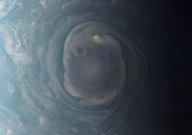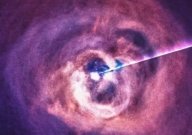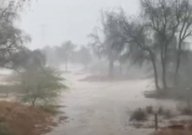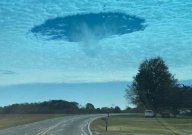Search results for: clouds

Crowd of worshippers stunned as 'Jesus' appears in the clouds
6-23-2025 | 19
19
The heavenly spectacle was filmed over the Philippines earlier this month during a celebratory gathering.

Mystery fog sparks conspiracy theories as it sweeps across US states
1-4-2025 | 35
35
Residents across multiple states have been reporting strange clouds of fog with a 'chemical-like smell'.

Viral video shows 'figures' standing on top of clouds... or does it?
VIDEO 1-2-2025 | 11
11
This peculiar phenomenon has been generating some heated debate on social media over the last week.

Biosignature gases in the clouds of Venus hint at presence of alien life
7-20-2024 | 36
36
Scientists have detected two gases indicative of life on Venus and nobody can explain how they got there.

Life could potentially exist in the clouds of Venus, new study finds
3-30-2024 | 0
0
Venus might not seem like a particularly hospitable place, but its atmosphere could support some forms of life.

NASA highlights mystery of UFO-like 'Cavum clouds' in satellite image
3-2-2024 | 2
2
The phenomenon, which looks like someone has punched holes in the cloud cover, had puzzled scientists for decades.

Pregnant women could help to solve the mysteries of pareidolia
10-1-2023 | 1
1
Pareidolia is the brain's tendency to perceive meaningful shapes in abstract patterns, such as seeing faces in the clouds.

OceanGate co-founder wants to build a floating colony on Venus
7-30-2023 | 12
12
As if visiting the Titanic wasn't risky enough, imagine living in a colony suspended in the clouds of another world.

Enigmatic green flash shows up in photo of Jupiter's swirling clouds
6-22-2023 | 3
3
The image, which was captured by NASA's Juno spacecraft, shows something quite spectacular.

Breathtaking and rare 'Levanter' cloud formation filmed over Gibraltar
9-11-2022 | 3
3
Remarkable Met Office time-lapse footage shows clouds flowing like water over the Rock of Gibraltar.

Space sounds very eerie in this new NASA audio clip
8-23-2022 | 5
5
The newly released clip is a processed recording of sound waves rippling through clouds of gas and plasma.

Clip of saucer-shaped 'UFO' goes viral on TikTok
7-17-2022 | 13
13
Footage of a large disc-shaped object emerging from the clouds has racked up millions of views on social media.

Exotic alien life forms could be living in the clouds of Venus
12-24-2021 | 1
1
A new study has put forward the idea that Venus could host life 'unlike anything we've seen.'

Pilot films mystery lights over South China Sea
VIDEO 12-7-2021 | 16
16
A pilot flying over the Pacific has captured footage of several sets of lights moving in formation through the clouds.

Dubai creates its own rain to beat the heat
VIDEO 7-21-2021 | 12
12
The city has taken the weather into its own hands by using drones to stimulate clouds into producing rain.

Weird 'sky squid' UFO filmed from airliner
VIDEO 6-11-2020 | 34
34
New video footage has emerged showing a very strange aerial phenomenon moving through the clouds.

Weird cloud formation sparks UFO speculation
11-14-2019 | 7
7
This large circular 'hole' in the clouds over North Carolina left social media users scratching their heads this week.

Mystery of 'UFO' near Bermuda Triangle solved
12-21-2018 | 7
7
One eagle-eyed Google Street View user recently came across a very unusual object in the clouds over Florida.

Could there be life in the clouds of Venus ?
4-1-2018 | 7
7
A new paper has put forward the suggestion that the clouds of Venus could be a habitat for microbial life.

'Ice-lollies' have been found in the clouds
6-20-2017 | 5
5
Scientists have identified a unique type of ice formation that can be found two kilometers up in the air.



















